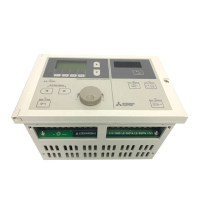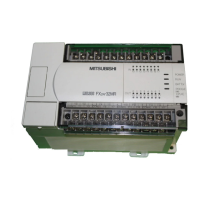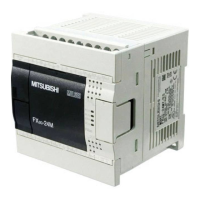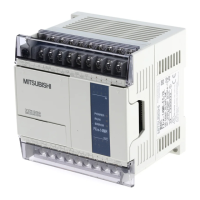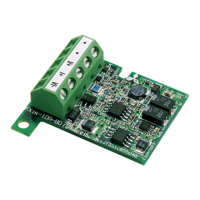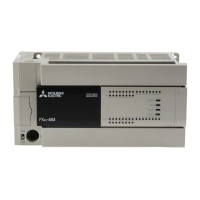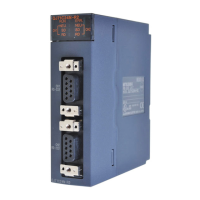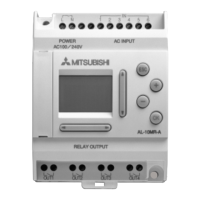276
6.3 Real Number (E)
he real number (E) is a device used to specify real numbers in programs. In programs, specify it as E (example:
E1.234).( Page 303, Appendix 1.3)
(1) Specification range
(a) Real number setting range
• For single-precision floating-point data
-2
128
< Device -2
-126
, 0, 2
-126
Device < 2
128
• For double-precision floating-point data
*1
-2
1024
< Device -2
-1022
, 0, 2
-1022
Device < 2
1024
*1 Up to 15 digits can be entered in a programming tool.
(b) When an overflow or underflow has occurred
(c) When a special value
*1
is input
If operation is performed with input data that contains a special value, "OPERATION ERROR" (error
code:4140) occurs.
*1 The special values are -0, unnormalized numbers, nonnumeric characters, and ±∞.
(2) Specification method
Real numbers can be specified in programs by the following expressions.
• Normal expression: A numeric value can be specified as it is.
10.2345 can be specified as E10.2345.
• Exponential expression: A numeric value is specified by (Value) × 10
n
.
1234 is specified as E1.234 + 3.
*1
*1 + 3 represents 10
3
in E1.234 + 3.
6.4 Character String (" ")
The character string is a device used to specify a character string in program. Characters enclosed in quotation marks
are specified. Alphabets are case-sensitive. A string from the specified character to the NUL code (00
H
) is one unit.
Note that, however, up to 32 characters can be specified for an instruction using a character string, such as $MOV.
Overflow Underflow
OPERATION ERROR (error code: 4141) Turned to 0 without any error
Ex.
Ex.
Ex.
Ex.

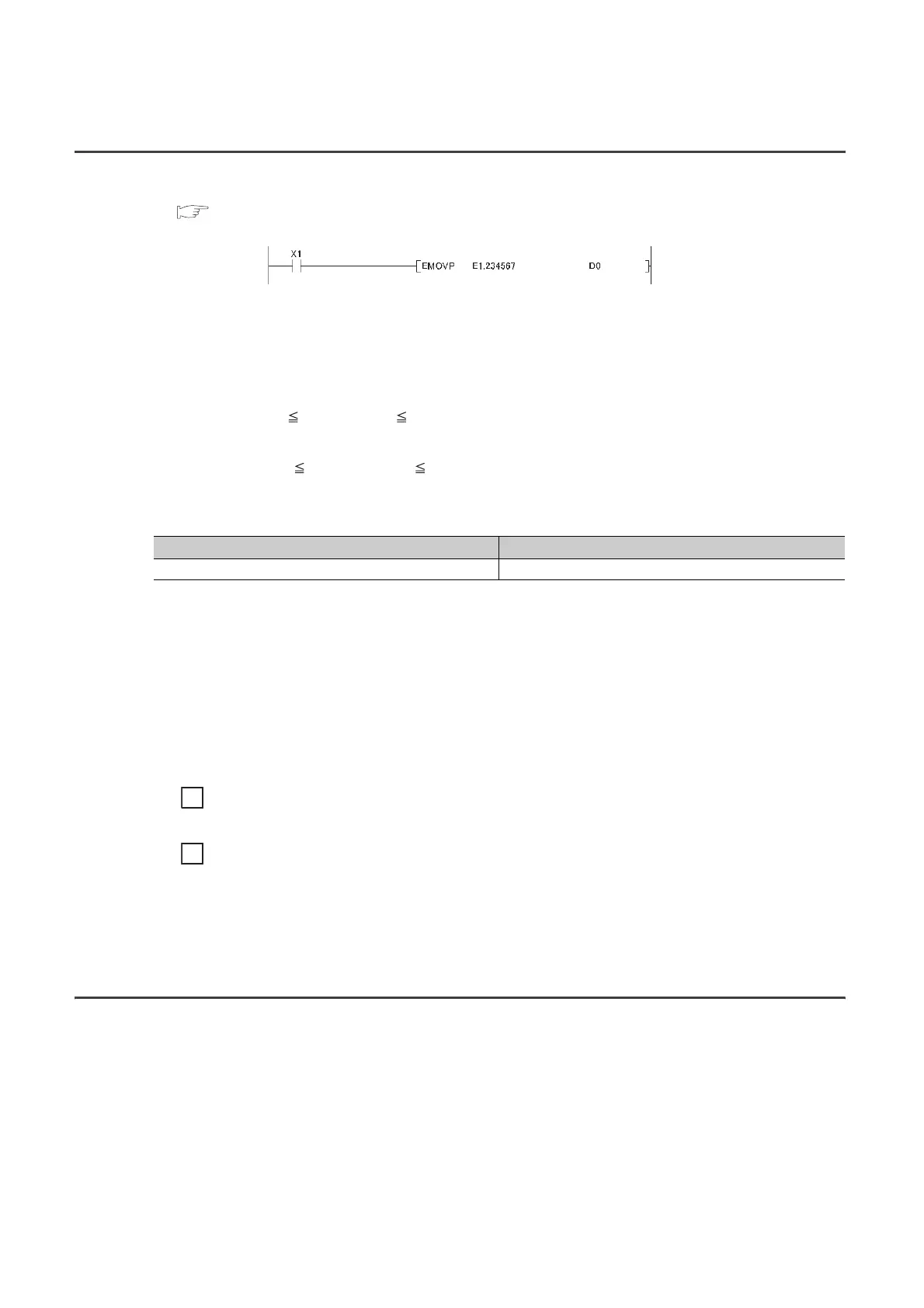